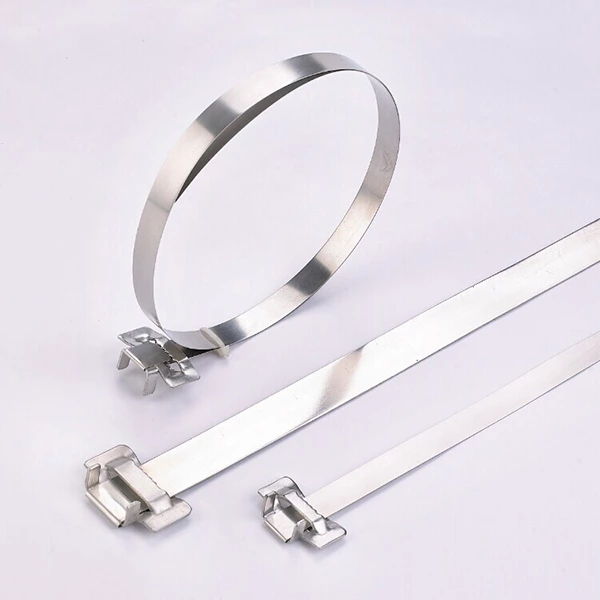What Are The Physical Functions Of Stainless Steel Cable Ties?
Stainless steel cable ties, as a widely used fastening tool, play a crucial role in numerous industries thanks to their unique physical properties. They are found in construction, machinery, chemical, and power industries alike. This article will delve into several core physical functions of stainless steel cable straps and their practical applications, helping readers better understand their value in modern industry.
High Strength and Durability: A Robust and Unchanging Foundation
One of the most prominent features of stainless steel cable tie mounts is their high strength. Thanks to the excellent properties of stainless steel itself, these ties can withstand extremely high tensile forces, demonstrating their irreplaceable advantage, especially in applications requiring high-strength fastening. Whether under extreme temperatures or after prolonged use, the strength of the ties remains stable, ensuring the long-term reliability of equipment.
Corrosion Resistance: Resistant to Moisture and Chemical Erosion
Another indispensable feature is their excellent corrosion resistance. Due to the material of stainless steel, these ties remain intact in many chemical environments, avoiding rust and corrosion. Even in humid environments and highly acidic or alkaline environments, stainless steel cable ties can still be used for a long time, making them an essential tool in power facilities, chemical pipelines, and food processing.
High and Low Temperature Adaptability: Stable Performance in Extreme Environments
Besides its high strength at room temperature, steel cable straps are also remarkable for their adaptability to extreme temperatures. They can operate stably in environments ranging from -80℃ to +800℃, while cable ties made of other materials may lose their strength or deform at high or low temperatures. This characteristic makes stainless steel cable ties an ideal choice for handling extreme temperature environments in industries such as aerospace and electronics.
Flexibility and Adjustability: Precise Adjustment, Safe and Reliable
While stainless steel cable ties are known for their strength and corrosion resistance, their design flexibility is equally important. The length and tightness of the cable ties can be adjusted according to actual needs, ensuring both safety and convenience when securing objects. This feature is particularly suitable for applications requiring precise control of pressure and tightness, such as cable management and pipe fixing.
Fire Resistance: Resilience in Fires
The fire-resistant properties of stainless steel give long metal zip ties excellent fire resistance. Unlike plastics or other materials, the cable ties will not melt or deform in high-temperature environments, a characteristic that is especially important in high-risk locations such as computer rooms and substations. In the event of a fire, stainless steel cable ties can effectively prevent equipment damage or safety hazards caused by fire sources.
Wide Applications of Stainless Steel Cable Ties
-
Power Industry: In power facilities, stainless steel cable ties sizes are commonly used for cable organization and securing, ensuring the stability and safety of power transmission.
-
Construction Industry: In construction projects, cable ties are used for pipeline securing, especially in the connection and support of piping systems, ensuring the stability of the pipelines.
-
Chemical Industry: In chemical environments, stainless steel cable ties, with their corrosion-resistant properties, are used to secure chemical pipelines and equipment, preventing damage caused by corrosion.
Summary
reusable metal cable ties, with their high strength, corrosion resistance, high and low temperature adaptability, flexibility, and fire resistance, have become an indispensable tool in various industries. From the power and construction industries to the chemical industry, stainless steel cable ties, with their unique physical properties, provide strong protection for the securing of equipment and pipelines. Understanding these functions can help users better select and apply stainless steel cable ties, improving work efficiency and ensuring safety.



